Belgium
In contrast to the modern architecture around it, "Picturesque Belgium" is a meticulous copy of a walled Flemish village as it may have appeared in 1800 - from the roof tiles to the costumes the villagers wear in the cobbled streets. More than 100 houses, a 15th Century church, a city hall with a rathskeller under it, a canal and an arched stone bridge occupy nearly four acres, making this the largest international exhibit at the Fair. Folk dancing, an 1898 carousel, native cuisine, handicrafts and crooked streets lined with small shops are part of the privately sponsored pavilion. The Belgium of a later era is also on display in the form of modern inventions, industrial exhibits and relics of World War II.
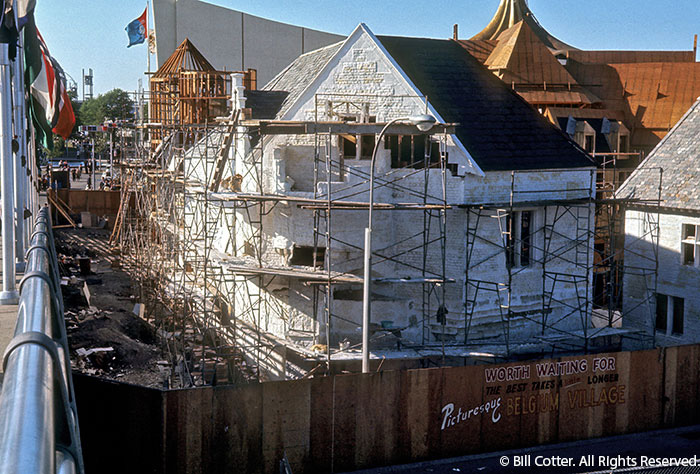
For most of the 1964 season, this was all Fair crowds could see of the Belgian Village, as the complex is best known. Funding and construction delays caused the developers to miss being ready for the Fair's opening day of April 22, and the Belgian Village didn't open until August 4. It almost never opened at all; there had been serious consideration of pulling down the unfinished buildings, the same fate that befell the never completed World of Food. (CD #TBD Set 355 #2)
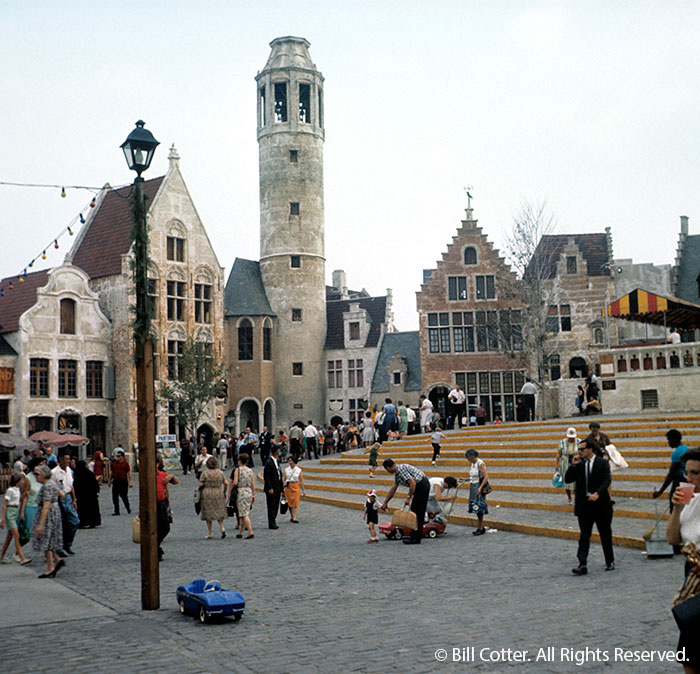
When the Belgian Village finally opened for business, guests that paid the admission fee were treated to more than $4 million worth of buildings that had been built with an attention to detail that surprised many of them. Anyone who had been to the 1933-34 Century of Progress in Chicago may have experienced a feeling of deja vu, for this village was almost an exact copy of the one at the earlier world's fair.
The bell tower at the center of this picture was the scene of one of the Fair's greatest mysteries. On the night that the Fair closed forever in 1965, someone stole all of the massive and heavy bells that had hung at the top of the tower. The thieves were never identified, and it is presumed that the bells were cut up for scrap metal. CD #41 Set 12 #20)
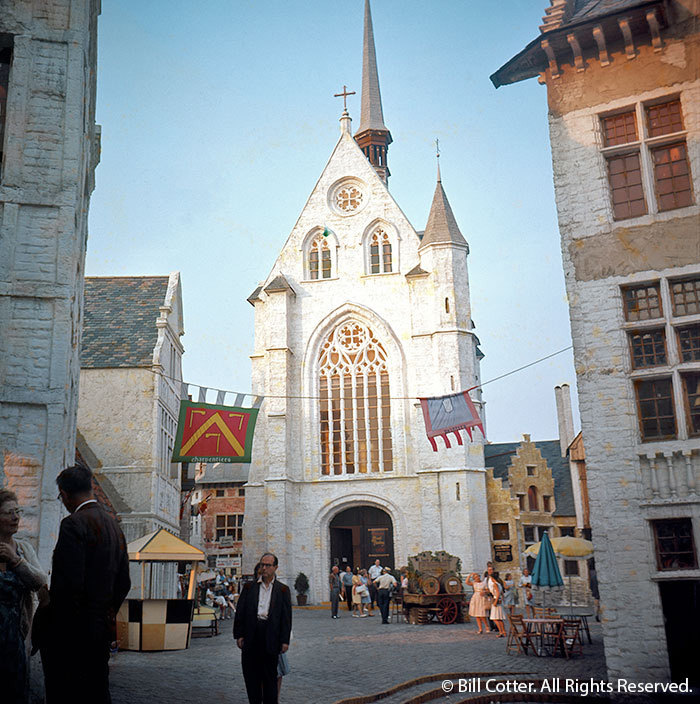
Colored Sands. Within the church, which is an exact replica of the beautiful Gothic Church of St. Nicholas in Antwerp, a number of major masterpieces have been copied in sand painting, an art form in which the Flemish specialize. (CD #TBD Set xx #14)

Gilles Dancers. Four times each day gaudily dressed clowns wearing wooden shoes,ostrich-feather headdresses and bells dance through the streets, accompanied by drums and brass instruments. The Gilles hark back to 1540, when Belgium was ruled by Spain, and the conquistadors' triumph over Peruvian Indians was celebrated at Mardi Gras. (CD #20 Set 105 #50)
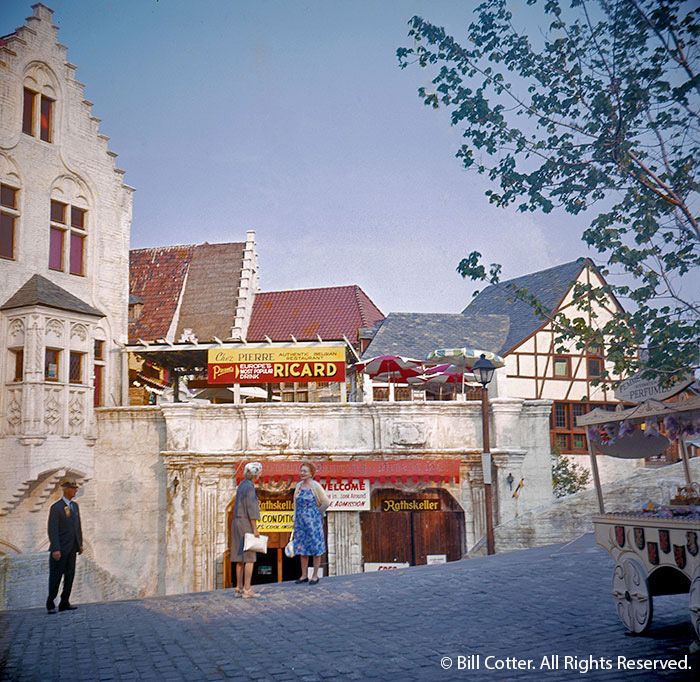
Beer Hall. A 1,500-seat rathskeller, largest of the village's 30-odd eating areas, is underneath the City Hall. A 20-piece band plays here, and American as well as European food is served. Beer, imported and American, is the specialty. (CD #TBD Set xx #10)
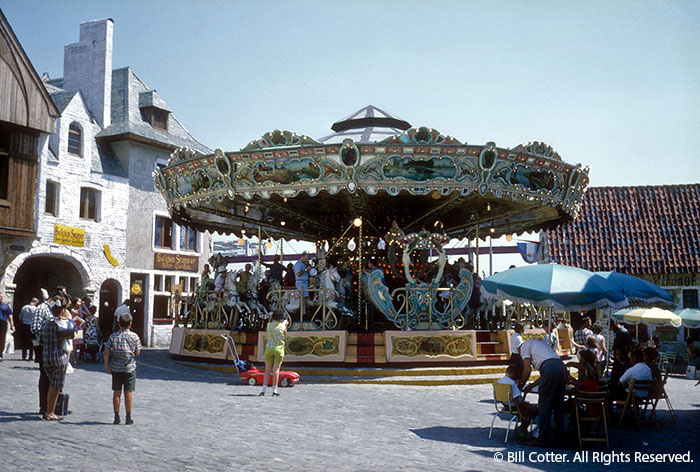
Originally built in 1885, the Bairolle-Belgique Carousel was relocated from Belgium to entertain riders of all ages at the Fair. When the Fair closed it was moved to Montreal as part of Expo 67, and can still be seen there today at the La Ronde amusement area. (CD #54 Set 230 #14)
Click here for a detailed history of the carousel. A new window will open on an external site.
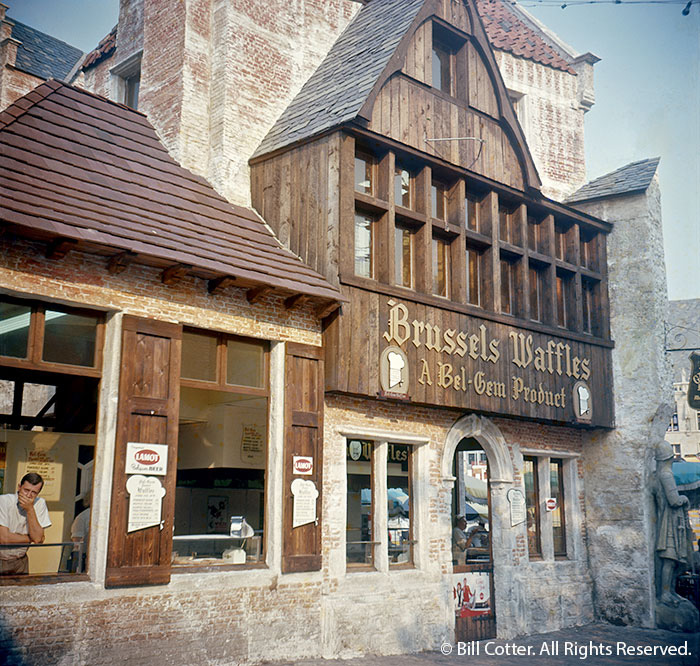
No look at the Belgian Village would be complete without visiting one of the waffle shops. The Fair is generally credited with introducing Belgian waffles to the United States, and they were unquestionably the culinary hit of the Fair. It looks like the crowd hadn't developed much of an appetite yet when this picture was taken. (CD #TBD Set xx #6)
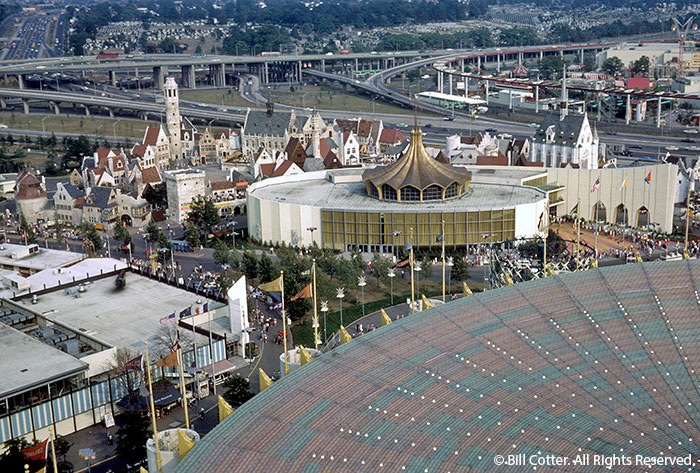
The full scope of the complex can be appreciated in this view taken from the New York State Pavilion observation towers. The site curved along the Fair boundary behind the gold-topped Vatican Pavilion. (CD #51 Set 30 #52)
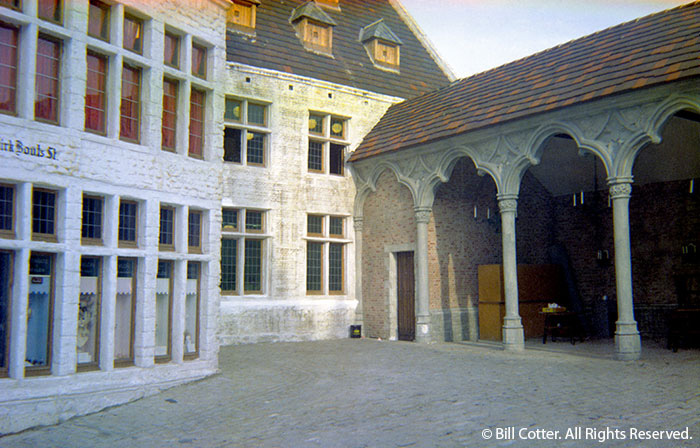
Unfortunately the Belgian Village never lived up to its full potential. Many of the original participants dropped out of the project when it failed to open on time, and as a result their exhibit spaces were never completed inside and some stood empty for the run of the Fair. Plans were announced to host a branch of the Playboy Club for the 1965 season but Fair officials quickly put an end to that scheme. (CD #15 Set 73 #27)
Want more information on the Belgium Village?
4-11-63 - Groundbreaking booklet
7-30-64 - Belgian Village Opens Saturday
5-13-65 - After Fair Brawl Is Over, The Image Ain't in the Pink
